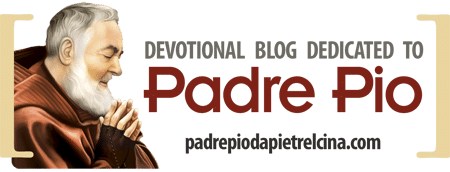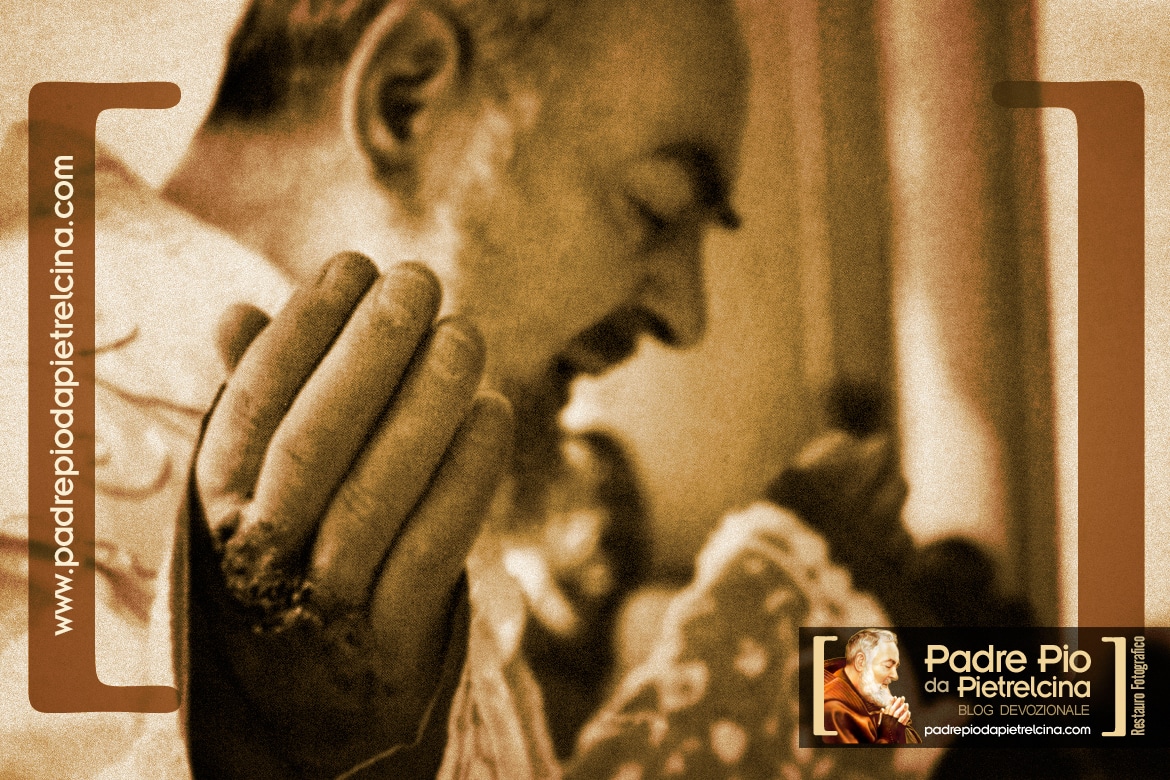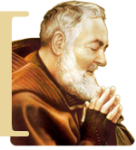On the morning of September 20, 1918, Padre Pio knelt in prayer before the crucifix. While meditating on Christ’s Passion, he felt a deep pain and realized that he had wounds similar to those from the crucifixion—his stigmata. From that moment, his life, and the life of the monastery, changed profoundly, drawing many faithful who sought spiritual support.
The Stigmata: A Visible Sign of His Union with Christ
On the morning of September 20, 1918, after celebrating Mass at the convent of Santa Maria delle Grazie in San Giovanni Rotondo, Padre Pio knelt in prayer before the crucifix. While reflecting on Christ’s Passion, he experienced intense pain and noticed wounds resembling those of the crucifixion. From that moment on, his life and that of the convent were deeply altered, attracting many people who sought spiritual help. Padre Pio and the mystical gift of the stigmata became symbols of divine love and sacrifice, visible signs of his profound union with Christ and his spiritual mission. These visible wounds sparked both devotion and admiration, but also scientific interest and questions from the Catholic Church.

The Stigmata of Padre Pio: The Scientific Perspective
The stigmata of Padre Pio were a tangible sign of his deep love for Christ, a suffering accepted in silence and offered for the salvation of souls. The stigmata were the subject of scientific studies, often sponsored by the Church itself, to understand whether they had a supernatural or natural origin. Dr. Luigi Romanelli, the first doctor to examine Padre Pio, conducted a meticulous and respectful investigation. In his report, he described the wounds as “deep, bleeding, without infection or signs of healing.” Despite his careful examination, the wounds defied any explanation, leaving science unable to provide a clear answer about their nature. A few months later, the Roman pathologist Dr. Amico Bignami approached the case with skepticism. He suggested that the wounds could be the result of autosuggestion or psychological factors. However, he couldn’t explain why the wounds continued to bleed without healing or becoming infected. His conclusions only added to the mystery. Professor Giorgio Festa, a surgeon, observed the stigmata with scientific rigor and personal reverence. He concluded that the phenomenon could not be explained by natural laws. His findings reinforced the belief that the wounds had a supernatural origin, fueling both public fascination and ecclesiastical debate. On the other hand, Padre Agostino Gemelli, a psychologist and physician, expressed clear skepticism. After a brief conversation with Padre Pio—lasting only a few minutes—and without examining the wounds, he declared, “There is nothing supernatural about this case.” Gemelli suggested that the stigmata were the result of psychological imbalance or intentional manipulation. His authoritative opinion had a significant influence on the initial response of the Holy Office, raising doubts and leading to restrictions being placed on Padre Pio.
The Church’s Cautious Approach
Amid the debate, the ecclesiastical authorities took a cautious stance. The Holy Office, concerned about the potential for fanaticism, imposed strict limitations on Padre Pio’s ministry in 1923. He was forbidden from celebrating Mass publicly and administering the sacraments. These measures were intended to test his obedience to ecclesiastical authority and to temper the growing enthusiasm among the faithful. Padre Pio accepted these restrictions with humility, seeing them as a manifestation of God’s will. “It is God’s will through the Church,” he said to his fellow friars, continuing his vocation in silence, focusing on prayer and reflection. Over time, the Holy Office recognized Padre Pio’s unwavering humility and moral integrity. The restrictions were gradually lifted, allowing him to resume his pastoral work. Until his death in 1968, he remained a spiritual guide for millions, leaving behind a lasting legacy of faith and devotion. Padre Pio’s stigmata, accepted with humility and love, tell the story of his intimate bond with Christ and his deep sacrifice for humanity.






